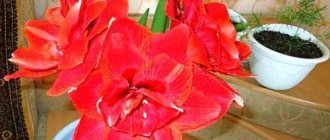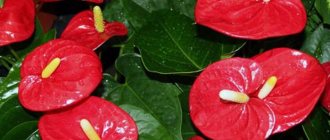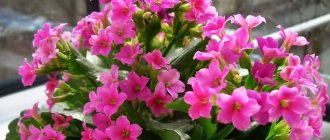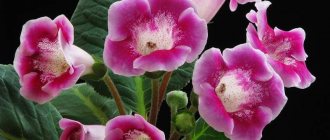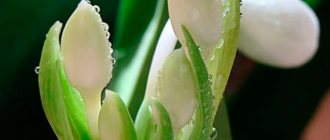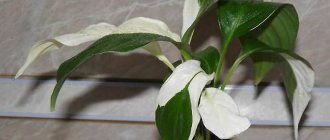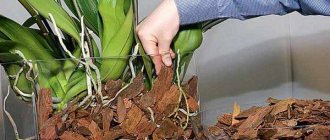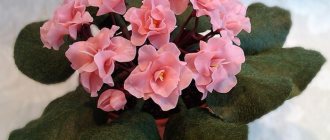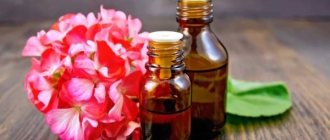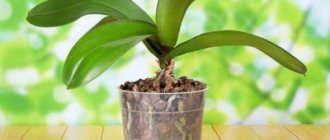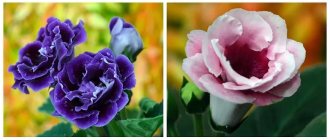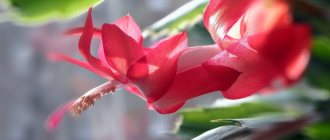Basic requirements for clivia content
Clivia is a tropical South African plant. As a result of breeding work, varieties with light yellow or dark orange flowers were developed. Clivia has shiny, dark green leaves. Once a year, in February-March, the plant produces an inflorescence consisting of many orange, cup-shaped flowers. The height of the bush is up to 50 cm, 5-6 new leaves grow on it per year.
Requirements for growing conditions for clivia:
- Clivia blooms best on a northern windowsill.
- During the calm period (at the beginning of winter), clivia requires a temperature of +7...+10°C. When the inflorescence appears, the room temperature should be raised to +15°C. In summer the maximum temperature should be +21°C.
- During the dormant phase, the soil in the pot should be slightly moist; for this it should be watered moderately once every two weeks.
- When clivia blooms, and later, throughout the growing season, the bush is watered at least once a week.
- During the summer, clivia is fed with liquid fertilizer, combining feeding with one of the waterings.
- Clivia needs air humidification in summer, so it is recommended to place the pot on pebbles lying in a tray of water.
- Periodically, the wide, fleshy leaves should be washed by hand with a sponge dipped in warm water.
Breeding clivia
How to grow clivia? There are two ways to propagate this plant - vegetative and generative. If you want to get seeds from your own clivia, you will have to use a pollination method, which requires remarkable skill and knowledge. But, often, the option of buying seeds is much simpler and faster than pollination. Before growing clivia from seeds, leave them for a few days to swell in water, then pour the sprouted seeds into a mixture of perlite and peat, which can be replaced with peat soil to a depth of about a centimeter. There should be a distance of at least two centimeters between the seeds. The container with seeds must be maintained at a temperature of 20-25 ºC, as well as the required level of ventilation and moisture. The first shoots appear after about a month and a half. As soon as the first leaf appears above the ground, the seedlings are transplanted into small sprouts with a soil mixture and then the plants are moved annually to appropriately sized pots. The growth process of clivia is quite slow, in the first year two or three leaves can grow, in the second year - six or eight large leaves, and in the third year three pairs of leaves grow. If you grew clivia from seeds, then the clivia will not bloom for several years. You will see the first flowers after quite a long period of time - 5-6 years.
Features of the flowering period
This flower differs from many other plants in that, without going into hibernation during the cold months, it will not be able to form and fully form flower buds. Clivia is not able to enter a state of rest on its own while in a warm room.
The dormant period will begin only after the gardener takes the planting container into a room where the temperature is significantly lower than room temperature (by 10 degrees or more), but significantly above 0°C. Usually the time to take the pot out into a cold room is at the end of October - November. The quiet period for clivia is no less than 6 weeks and no more than 8 weeks.
Read more about how to care for clivia at home.
Diseases and pests
Pests rarely bother clivias, but in order to deal with them, it is important to notice the onset of an attack in time and prevent them from multiplying. If there are too many pests, it will be very difficult and sometimes pointless to fight them. The most common enemies of clivia are scale insects and mealybugs, rot .
The scale insect, also known as the shield aphid, has a protective waxy shield that protects the body of the pest. Adult aphids are motionless, but the larvae can crawl throughout the flower. Mealybugs form colonies.
Photo gallery: enemies of clivia
A sign of scale insects is red sticky spots and brown plaques on the leaves.
Mealybug forms a cottony coating on the leaves
The most common disease of clivia is rot.
Table: flower treatment for diseases and pests
| View | What does it look like | What to do |
| Scale insect (shield aphid) | Dark spots-growths on leaves | The larvae are destroyed by washing the flower with a soap solution (a small amount of kerosene or denatured alcohol can be added to it for effectiveness). Adults are removed with a damp soapy swab, but after this the plant must be sprayed with an insecticide. |
| Mealybug | Looks like white cotton wool on the leaves | A small number of pests can simply be removed with a damp swab, but if there are too many of them, it is necessary to spray the clivia with an insecticide weekly until recovery. |
| Rot | The leaves turn yellow, the plant begins to die | The reason is most often damage to the roots, so damaged roots should be cut off, the sections should be sprinkled with crushed coal and the plant should be transplanted into new soil. |
Soil contamination is the most common cause of pests and diseases, so do not forget to disinfect it before planting or replanting.
Why does clivia not bloom at home?
When a grower grows clivia for several years, but the flower arrow still does not move forward, it means that the conditions provided to the flower are not suitable for it. Perhaps the plant is too hot or too cold, too dry or wet, or the flower is not receiving enough light.
Natural causes
A flower that often blooms in the first year does not bloom in the next few years. It is possible that early flowering and seed production significantly deplete clivia. Some gardeners recommend removing the flower shoot in the first year of cultivation to give the plant time to get stronger.
Improper care
Lighting. This is a very important factor, if the lighting is weak, the light is dim, then the clivia does not throw out a flower arrow, but seems to freeze in growth, waiting for suitable conditions. Clivia likes bright light, but is not too fond of direct sunlight. Starting from the end of May, the flower pot is placed so that the sun's rays do not fall on it. If a flower receives little light or is obscured by taller plant neighbors, it rarely blooms.
Soil and pot. The reason that clivia does not bloom may be a lack of space for roots to grow. If the plant is cramped in the pot and does not receive the necessary nutrients from the soil, flowering will not take place. The flower needs to be replanted every 3–5 years. As a soil mixture, take one part at a time: loam, peat chips, coarse sand, compost. The result is a nutritious hygroscopic substrate. The first sign that it is time to replant the bush is the appearance of roots above the soil surface. The bush is replanted after flowering.
Rest phase. A flower that has not passed the resting phase will not bloom. The release and quality of flower stalks depend on the duration of the dormant phase and the air temperature during this period. The flower needs at least six weeks in the cold. It is the warming up after the cold dormant phase that prompts clivia to begin flowering. Flowers that grow in planting containers in a warm house may miss the cold phase and not bloom. It is best to take clivia for a long time to the veranda, to a cold pantry, basement or garage, where the temperature is low, but not freezing.
Important! When growing clivia, it is important not to forget that it always needs bright light; in low light the bush will never bloom.
Violation of the watering regime
Clivia cannot be constantly watered in the same way, otherwise there will be no flowering. Each growth phase requires a special approach to watering. The plant needs a moist substrate, but abundant watering is necessary mainly in the summer. In August they begin to limit the amount of water, and in winter the soil is moistened only when the soil in the pot is clearly dry. Limiting the amount of moisture and lowering the air temperature to approximately +10...+15°C has a positive effect on the formation of future flower buds. At the end of winter, the air temperature and frequency of watering are increased again. It is worth remembering that it is better to moisten the soil with soft water at room temperature. Excess water from the pan in autumn and spring should be drained regularly to prevent the development of root rot.
Incorrect application of fertilizers
Improper application of fertilizers also negatively affects the formation and development of flower buds. Frequent feeding provokes rapid growth of leaves, to the detriment of flowering. Lack of nutrition in the soil also prevents clivia from blooming.
It is optimal to apply fertilizer at the root during the period of rapid growth (from spring to the end of July) every 2 weeks. The most suitable is a liquid multicomponent fertilizer for potted plants (“Ammophos”, “Kemira”, “Nitrophoska”), which contains all the necessary nutrients and minerals. Starting in August, feeding is stopped in connection with the preparation of the flower for the dormant period.
Did you know? Some Clivia species, including Clivia miniata, produce small amounts of the alkaloid lycorine. This is a toxic substance, so clivia leaves should not be chewed, which is sometimes done by small children and pets.
Diseases and pests
Sometimes potted clivia is attacked by the following insect pests:
- Mealybug. These are flightless insects that look like whitish cotton wool on the leaves. They hide in the core of the bush, in the fork of the leaves. Mealybugs can be removed from the leaves by wiping them with a washcloth soaped with laundry soap. In addition to soap rubdowns, plants are treated with an insecticide weekly. Spraying an infected plant with insecticidal solutions is often ineffective; granular systemic insecticides, which are added to the soil around the base of the infected plant, are much more reliable.
- Root nematodes. These are not insects, but tiny worms about 1 mm long, transparent and colorless. Root nematodes can infest clivias and are nearly impossible to get rid of. The most effective method of destroying them is heat treatment, in which the plant is briefly dipped in hot water. But using this method is quite dangerous, since: the water is not hot enough and the nematodes remain alive, the water is too hot and the plant dies.
- Shield. It feeds on the sap of leaves, and black necrotic spots form in the feeding areas. Scale insects can be seen on the leaves in the form of brown plaques-growths. The most effective method in the fight against scale insects is wiping the leaves with a soap solution with the addition of kerosene or denatured alcohol. In addition to wiping, the flower is sprayed with an insecticide.
Diseases that affect Clivia:
- Viral infections. Plant viruses can get on clivia by being carried by migrating insects or unsterile tools of the grower. The viral infection usually appears as a mottled, mosaic or checkered pattern of light green, contrasting with the normal dark green color of a healthy Clivia leaf. There are no treatments for viral diseases for Clivia. To avoid the spread of the disease among other flowers, the plant infected with the virus is immediately isolated from other flowers and subsequently burned.
- Fungal infections. Fungus usually develops on clivia because the plant is kept in too cold a room and over-watered. It is necessary to stop watering, increase the temperature in the room, cut off the affected leaves, and treat the diseased flower with a fungicide. There are many systemic fungicides for the treatment of fungal diseases on plants: “Fundazol”, “Champion”, “Topaz”.
Important! After working with a plant that has signs of a fungal or viral disease, all tools must be treated in any disinfectant solution (for example, white), and only after that begin working with other plants.
What to do to make a flower bloom
The main condition for the flowering of Clivia is the correct organization of the dormant period. Its duration depends on the age of the plant. For a young culture, two months are enough, for more mature ones - at least 3 months. From September, watering is gradually reduced, and then they stop moistening the soil altogether. The temperature regime also changes.
You should pay attention to the capacity of the pot. The flower does not enter the flowering period also because the roots are constrained. Clivia does not like disturbance, so you need to carefully transfer the bush to another container. The roots should not be freed from the soil, as they may be damaged. It is also better to avoid frequent changes of placement.
Moderate watering is needed, but such that the soil constantly evaporates moisture. Irrigation is carried out with warm water. To make the liquid soft, it is recommended to boil it first.
In winter, creating favorable conditions with the heating system on is quite difficult. Radiators dry out the air, making it difficult to reduce the temperature to the desired level. It is ideal to use the room on a glassed balcony or loggia. In a private house you can use utility rooms, greenhouses and a winter garden.
Eliminating the reasons why Clivia does not bloom
Measures to eliminate interference due to which Clivia does not throw out a peduncle are carried out depending on the identified reasons.
| Elimination of causes | |
| The essence of the problem | What to do |
| Mealybugs |
|
| Shchitovka |
|
| Unfavourable conditions |
|
| Micronutrient deficiency |
|
| No rest period |
|
| cramped potty |
|
Stimulating feedings
Timely introduction of fertilizing ensures intensive formation of buds and prolonged flowering. During the growing season, Clivia should be fed 1 r. in two weeks. The crop responds well to organic matter and mineral fertilizers, so it is recommended to use both types of nutrient mixtures alternately.
When choosing ready-made formulations, preference is given to fertilizers containing phosphorus and potassium. It is these elements that are necessary for Clivia to bloom.
Reference! Nitrogen fertilizing is important for increasing green mass. They are used to stimulate the growth of young plants. Nitrogen has no particular effect on the release of peduncles and budding.
Agrotechnical techniques
Clivia thrives in moderate temperatures. During the cold season, in the room where the flower pot is located, a stable temperature range of 14-16 degrees is established. During the flowering period, the temperature is increased to 18-19 degrees. In summer, the plant is taken out into the garden, choosing shady areas under the dense crown of trees or shrubs.
The flower needs good lighting, but the light should be diffused. When choosing a place for a pot with a crop, you should choose a window sill or balcony located on the north or west side. In winter, to prevent freezing, Clivia is placed in a bright room.
The flower needs abundant watering from spring to autumn. From the end of September, the intensity of irrigation is significantly reduced, or completely stopped until January-February. When the air temperature rises above 20 degrees, moisten it daily in moderate quantities using a watering can or spray bottle.
When replanting a plant, the pot is filled with a mixture that includes: leaf soil (4 parts), sand (1 part), turf soil (8 parts). Sand or gravel is first added to the bottom to create drainage.
You can determine the need to replant Clivia by the roots crawling out of the pot.
Fertilize the flower in the first year of life 1 r. in 1-2 months. From the second year, fertilizing is applied every 2 weeks. To stimulate growth, nitrogen compounds are used; to activate flowering, potassium-phosphorus fertilizers are more suitable.
What to do and how to make clivia bloom
To make clivia bloom, you need to change the growing conditions as required by the plant:
- provide the plant with good watering in the warm season;
- regularly feed the bush from May to August;
- provide bright lighting, without direct sunlight, for the entire growing season;
- allow the flower to go into a long (at least 6 weeks) dormant period at cold temperatures;
- destroy pests and monitor the health of the bush.
How to create favorable conditions?
To avoid diseases and achieve regular flowering of clivia, the following conditions must be observed:
- Providing a period of rest .
Young plants rest for two months from October to November. Adults and large specimens require longer rest. In September, reduce watering to once a month. Place in a cool place with an ambient temperature of 14 degrees. After the flower shoot appears and grows to 10-15 cm, the plant is placed in a warm place. Watering becomes regular. Fertilizers are applied as needed. - The plant should not be disturbed.
During the period of bud setting and flowering itself, you cannot move the flower from place to place. If the need arises, then you need to maintain the direction of flower growth, otherwise the plant may shed its leaves. Clivia blooms from February. Flowering period 3-4 weeks.
How to avoid mistakes in care
To prevent the condition of clivia from worsening, it is important to adhere to the following recommendations:
- Periodically, preventive treatments are carried out against fungal diseases and the bush is examined to detect pests.
- Plants are planted in a narrow and high pot, this is due to the fact that the roots of clivia are long, and if there is not enough space, they appear on the surface of the soil.
- The pot must have 2-3 holes for water drainage, which will prevent excess moisture from stagnating in the root zone.
- Before planting a flower, drainage made from tree branches, fragments of polystyrene foam or clay shards must be placed at the bottom of the pot. Excess water will accumulate in the drainage area, and this will protect the clivia from the formation of root rot.
- Watering should only be done with slightly warm, soft water. If tap water is used, then only after standing for several days. The best option for irrigation is rain or melt water.
- Limit contact between healthy and diseased plants, apply temporary quarantine after acquiring a new flower for the collection.
Did you know? Clivia nobilis was the first named species of clivia. In 1828, the botanist C. D. Lindley named it after Miss Clive, Duchess of Northumberland.
Clivia blooming with a bright spot will decorate any room. To do this, the gardener needs to provide the decorative flower with proper care (watering, favorable temperature, fertilizing).
Advice from experienced flower growers
The best stimulation for Clivia to bloom is proper care and timely treatments. The best helpers in this matter are the advice of experienced flower growers.
- When moving the pot to another place, the side that was illuminated before is placed in the light.
- The container for the flower is selected with the same parameters as the root system. It should completely fill the volume. This is due to the fact that the roots are adapted to retain moisture.
- After releasing the arrow, you need to gradually restore watering to the plant, change the air regime to 15-17 degrees. Due to insufficient irrigation or cold weather, the flower stalk may become stuck inside the leaves.
- The life cycle of Clivia reaches 40 years. In adulthood, the bush is not replanted so as not to harm it. Fertilizers are regularly added to the tub, and a 4-month rest period is organized once a year. This is enough to continue entering the flowering period.
- On hot summer days, it is advisable to take the flower pot out into the garden in the shade of tall plants. This way the crop can more easily withstand high temperatures. “Baths” will be beneficial. From the shower, the leaves are washed with a warm stream. You can also wipe the leaves with a damp sponge.
- A blooming Clivia cannot be transplanted into another pot. Even if the roots have come out of the container, you need to wait until the inflorescences wither.
With proper care, Clivia will delight the eye with beautiful blooms for many years and complement the interior with bright colors.
Watch a video on how to make Clivia bloom:
Homeland of the plant, description
In nature, clivia grows in the tropical forests of southern Africa. Belongs to the amaryllis family, and is a perennial plant with long leaves collected in rosettes.
Clivia flowers come in red, orange, yellow or white.
On one flower arrow, about 20 bells bloom in turn, blooming throughout the month. One plant produces from 2 to 5 peduncles, up to 45 cm high.
Clivia has long and shiny leaves of a dark green color, up to 75 cm long and up to 8 cm wide. Their edges are slightly narrowed and their side parts are smooth. Clivia does not have a bulb, but it has powerful roots.
Types of clivia with photos and names
Only three types of clivia are grown indoors. Moreover, each of them is very popular among gardeners.
Clivia miniata
The bush reaches about half a meter in height. The leaf rosette is formed from belt-shaped foliage, while the width of the plates is about 6 centimeters and the length is up to 60 centimeters. The foliage color is dark green. Umbrella-shaped inflorescences consist of 12–20 large flowers of a rich orange color with a fiery red tint. Sometimes in the middle of the flower there is a star-shaped spot of a golden hue. The flowers reach about 60 mm in diameter. The long peduncle is devoid of foliage.
Clivia nobilis Lindl
The plant has a height of about 0.3 m. The edge of the flat, belt-shaped leaf plates is sharp. The foliage is about 60 mm wide. An umbrella-shaped inflorescence of 45–55 pink or reddish flowers is formed on a half-meter-long peduncle.
Clivia gardenia W. j. Hooker
The dense rosette consists of long, belt-shaped leaf plates. The leaves are about 40 mm wide. The peduncle is long (about 45 centimeters), and about 15 narrow tubular flowers are formed on it. The flowers can be colored in various shades from orange-golden to cream.
Types of flower
Clivia domestica is divided into types:
- Clivia cinnabar . It was discovered by botanists in 1850. The flower has dense leaves of a dark green color, about 70 cm high. The plant blooms in early spring with red-orange flowers with a yellow core. There are about 20 buds on one inflorescence. It is this variety that is in great demand in home breeding;
- Clivia is beautiful (noble) . The variety was discovered in 1828. It is a small indoor flower, up to 30 cm high. It has dense leaves, pointed at the end, up to 40 cm long and 4-6 cm wide. The fleshy peduncle grows up to 50 cm, and from 30 to 60 flowers bloom on it . The buds are pale red or orange, and each petal has a pointed greenish tip. The length of the flowers is 2 cm;
- Clivia Gardena . The flower is named after Major Robert Garden, who discovered it in 1856. It differs from its counterparts in long bright green leaves, up to 50 cm high. They have a smooth dark green surface covered with raised stripes. The edges of the leaves are pointed. The flower arrow is erect, about 50 cm long. Up to 15 small red bells bloom on it;
- Clivia variegata . A very original and spectacular indoor flower, 50 cm high. It has beautiful dark leaves with rounded edges. There are white stripes in the middle of the leaf that distinguish the plant from other species. There are 20 yellow or orange large flowers on the flower arrow.
